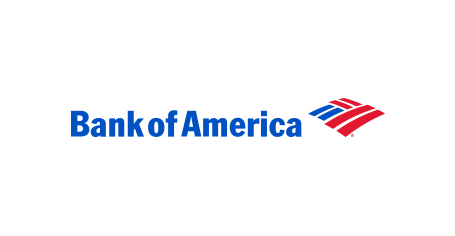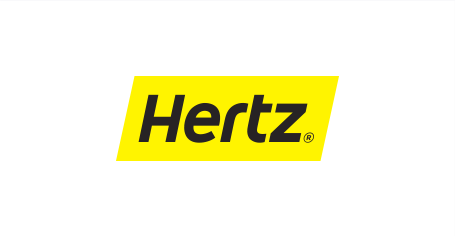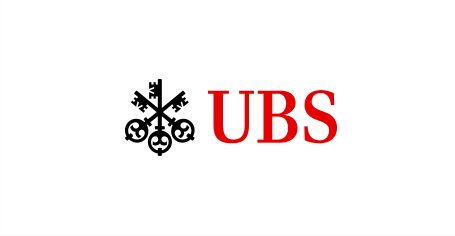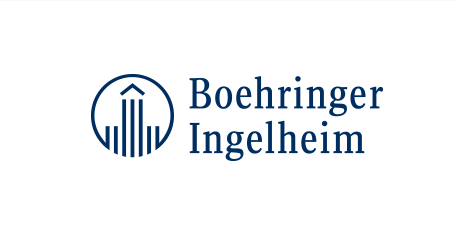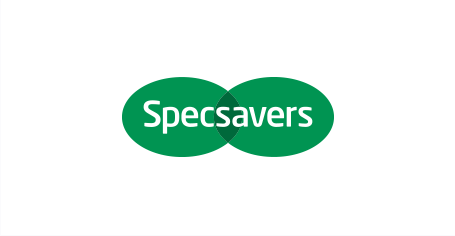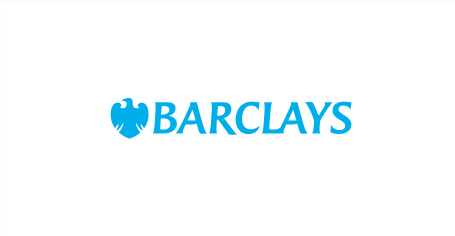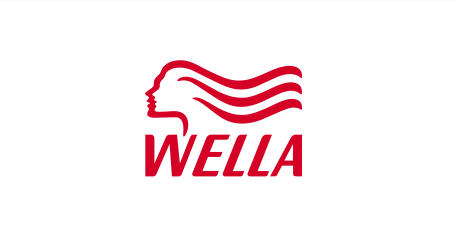Downloads and Sources
Buying, Selling, Persuading and Influencing
- To watch Prof. Sheena Iyengar talking on CHOICE click here.
- For more information on Leon Festinger’s theory of COGNITIVE DISSONANCE click here.
- For details of Philip’s ‘Secrets to Excellent CUSTOMER SERVICE click here.
- For more information on DECISION MAKING and the role of the ventromedial prefrontal cortex click here.
- For more information on Kahneman and Tversky’s work on DECISION MAKING, rational choice and the ‘framing’ of decisions click here.
- To listen to Robin Dunbar talk about we typically have 150 FRIENDS here
- For more information on Coca-Cola’s launch of ‘NEW COKE’ in 1985 and the inherent problems in ‘Blind Tasting’ click here.
- For more information on Juri Allik’s work on how you PERCEIVE YOURSELF matches what others think of you click here.
- For more information on Yardi and Boyd’s work on POLARISATION click here.
- For more information on REGRET and why we regret things we haven’t done rather than things we have click here.
- For more information on John Gottman’s work on RELATIONSHIPS click here.
- For more information on Professor Gerald ZALTMAN click here.
- For more information on how and why people ‘shirk’ and how to stop them doing it click here
- For more information on why brand names with numbers are better liked click here
- For more information on the three most successful sales expressions click here
- For more information on the placebo effect click here
- For more information on how to avoid procrastination and the ‘Zeigarnik Effect’ click here
Motivation and Happiness
- For more information on the ‘ATTITUDES TO CHIPPED CUPS’ and, more specifically, the ‘Broken Windows’ theory of Wilson and Kelling click here.
- For more information on Bayes’ theorem which calculates how new information about an event changes your pre-existing EXPECTATIONS OF HOW LIKELY AN EVENT WAS click here.
- For an introduction to Daniel Gilbert’s work on the Pursuit of Happiness click here.
- For details of Brickman, Coaxes and Janoff – Bulamn’s research on the HAPPINESS of paraplegics versus lottery winners click here.
- For details of Richard Layard’s talk on HAPPINESS: HAS SOCIAL SCIENCE A CLUE? Click here.
- For more information on Hsee and Zhang’s work on MISPREDICTION and Mischoice Due to Joint Evaluation click here.
- For more information on Professor David McClelland’s work on MOTIVATION and how it comprises of Achievement needs, Power needs and Affiliation needs click here.
- For more information on Leslie Hannah’s analysis of the TOP 100 COMPANIES in the world and how over 80% fell out of the top 100 in 83 years click here.
Pricing
- For more information on Professor Antonio Rangel’s work on how PRICE RAISES PERCEPTION OF QUALITY click here.
- For more information on PRICE KNOWLEDGE of supermarket shoppers click here.
- For the details of Anderson and Semester’s work on ‘Effects of $9 price endings on Retail Sales click here.
- Here is Philip’s summary on PSYCHOLOGICAL PRICING (or ‘The 99p Phenomenon’):
£99 v. £100. Fact or Fiction? Psychology or Habit?
Is there is a real, commercial benefit in pricing items just below the obvious price point? Will a car dealer sell more cars if they are priced at £9,999 and not £10,000 or is it just habit and common practice? If it DOES make a difference is it the ‘9’ that’s critical or could a ‘7’ be even better? If it DOESN’T make a difference (because we all see that £99 is only £1 less than £100) might we just as well charge £105 and increase our profits by somewhere between 10% and 50% depending on the margin?It’s a key question. What is it that influences buyers?
This is a summary of the research I have done with a major retailer and Newcastle University and also a précis of other research – mainly from the USA – that has been done in this area. I’m currently looking for more stores to participate in further research by testing your own pricing. If you want the one line summary it is this:
9-ending prices affect perceptions of value and increase sales in certain situations.In the summer of 2009 ‘The Grocer’ and several national newspapers reported that a number of stores (and, in particular, Asda) had gone to ‘rounded-up’ pricing. Indeed it’s thought that Asda had increased their 00 prices by 40% in the previous year. Dr David Lewis of Mindlab had done some research to show that 00 endings are more attractive to customers. In other words, we consumers prefer 00 endings. So I called him and he confirmed that that’s all based on what people SAY they do – what they actually do is a different thing. For proof of that you need look no further than the fact that most people in blind tests prefer Pepsi but most people buy Coca Cola. My own research with golf balls in conjunction with Newcastle University shows that despite us proving to golfers that buying a more expensive golf ball make no difference to length and accuracy they prefer to buy the most expensive (and brand leading) product.
What I am interested in is not what people SAY they do nor, indeed THINK they do but what they ACTUALLY do.
There is a lot more to it, but if you are one page kind of a person, basically, 9-ending prices will be perceived to be smaller than a price £1 higher if the leftmost digit changes to a lower level (e.g., £300 to £299) but not if the leftmost digit remains unchanged (e.g., £360 to £359). Psychologists call it ‘The Left Digit Effect in Price Cognition.’
I’ve crammed into less than 2,000 words some of the research that has been done within the last few years on whether 9-ending prices are perceived to be smaller than a price £1 or 1p higher. Some of the research is about perception and some of it is about whether ending prices with a 9 actually sells more product.
Firstly, in conjunction with Newcastle University and Cartridge World over a six month period certain shops sold all cartridges of a particular brand at ‘standard prices’ – i.e. all prices ended with a 00p for a particular period of time. Having collected the sales data we then had half the shops ADD 99p to all those particular cartridges whist the other half of the shops kept prices as they were. The results clearly showed that when prices were increased– and have an ending with 99p – unit sales increased by over 12% in the first test and by over 6% in the second test.
Let’s summarise this. Unit sales increase when we added 99p to prices of ink cartridges!
Needless to say the retailer is continuing to extend the tests. Remember this is measuring unit sales – not turnover. So adding 99p not only increases profitability but also sales.
Here is a summary of previous research ~ as I say; it’s mainly from the USA:
Anderson and Simester (University of Chicago & Sloan School of Management respectively ~ 2003) did three field-studies in which price endings were experimentally manipulated. There were two clear conclusions. First, use of a $9 price ending increased demand in all three experiments. Second, the increase in demand was stronger for new items than for items that the retailer had sold in previous years. They also found that $9 price endings are less effective when retailers use Sale cues and that $9-endings may be more effective when customers have limited information. They concluded that we, The Great Unwashed, rely on retailers to tell us whether we’re getting a good price. In subtle and not-so-subtle ways, retailers send signals to customers, telling us whether a given price is relatively high or low. Their tests with several mail-order catalogues revealed that including the word “sale” beside a price can increase demand by more than 50%. The most fascinating study the authors did involved a women’s clothing catalogue. They got a national mail-order company that sells women’s clothing to send out different versions of a catalogue to separate, randomly-selected customer samples, where the same products had 9 price-endings in some catalogues and non-9 price-endings in others. Get this; they increased demand by 33% just by changing the price of a dress from $34 to $39. (Yes, upwards!) Fantastic! If you want to test like this let me know ~ I’d love to be involved. But Anderson and Simester also observed that a consumer who looks at a price like $43 ignores the right-most digit and treats this as $40…..
Thomas and Morwitz (Journal of Consumer Research June 2005) did a substantial piece of research and five different experiments and found that lowering a price by one cent to a 99 ending affects magnitude perceptions when the left digit changes (e.g., $3.00 to $2.99) but does not affect magnitude perceptions when the left digit is unchanged ($3.20 to $3.19 or $2.80 to $2.79.)
Gendall, Holdershaw and Garland (European Journal of Marketing 1997) tested six products ranging in price from $5 to $100. The products tested were a block of cheese, a frozen chicken, a box of chocolates, a hair dryer, an electric kettle and a food blender. (Perhaps they used to watch ‘The Generation Game’?) For all six products, demand was higher than expected at one or both of the odd price points tested. This effect was particularly marked for the lower-priced food items (cheese, chicken and chocolates) and for prices ending in the digit 9. They concluded that ‘odd pricing generates greater than expected demand’ and effectively recommended setting retail prices which end in 99 cents or $99.Robert Schindler (Rutgers University, USA January 2006) after some very thorough research, concluded that ‘There is evidence that the rightmost digits, or endings, of retail prices can communicate meanings to consumers.’ Basically he found that the 99 price ending actually has a low-price meaning even if 99-ending prices were higher than other competitive prices. Also included in Schindler’s list of research (sorry, but it had to be done) was that the 95 price ending, which is the second most commonly occurring two-digit ending, was not positively correlated with low-price appeals. In other words, the 95 ending may not be an appropriate means to support other low-price cues in retail advertising. You may as well make another four quid. The endings 79, 88, and 98 are positively correlated with low-price appeals and the endings 49, 50, and 90 are negatively correlated. Previously (1996) Schindler & Kibarian tested odd pricing using three versions of a direct mail catalogue for women’s clothing. The catalogues were identical except for the prices, which ended with 00, 99, or 88. The version with prices ending in 99 generated 8% more sales volume and had more purchasers than the 00-ending version. The 88-ending catalog produced a similar sales volume and number of purchasers to the 00-ending version
Harris and Bray (Journal of Product & Brand Management 2007) found that that there was a difference between gender groups; women were more likely to respond with odd-endings than men.
Kalyanam and Shively (Santa Clara University & University of Texas respectively ~ 1998) produced evidence from controlled experiments which demonstrated that the 99 price ending communicates to consumers the meaning “low price.”
Just to throw a spanner in the works, www.marketingexperiments.com (well worth checking out over a sandwich and a coffee on your lunch hour) worked with an un-named but ‘leading’ psychiatrist (wonder what you have to do to be a ‘leading’ psychiatrist?) to maximize the online sales of his book. They tested (using search terms on Google AdWords on an A/B/C split basis) three price points $7.95, $14.00 and $24.95. The $14.00 price point generated significantly more orders. But because of the larger price point, the $24.95 offer actually generated the most revenue. Whichever way you look at it, $7.95 was perceived to be cheap and not worth it. (When my book became the Amazon number one best seller it then sold to a completely new audience because it was perceived to be the best / the authority.
Wisniewski and Robert Blattberg at the (University of Chicago) showed that when the price of margarine was lowered from 89 cents to 71 cents sales volume increased by 65%. When it was lowered from 89 to 69 cents, sales volume increased by 222%.Where does all that leave us? Well, the psychological theory of why 9-ending prices work is based on one or more of the following five hypotheses:
We read right to left and ‘inprint’ the lower price first (Consumers ignore the least significant digits rather than do the proper rounding. Even though the pennies / pounds are seen and not totally ignored, they may subconsciously be partially ignored. Some suggest that this effect may be enhanced when the pennies / pounds are printed smaller (for example, £1999).
Fractional prices suggest to consumers that goods are marked at the lowest possible price; that retailers are doing all they can to reduce prices.
Now that consumers are used to psychological prices, other prices look odd.
When items are listed in a way that is segregated into price bands, (plenty of web sites do this) price ending is used to keep an item in a lower band, to be seen by more potential purchasers.
It’s like war and the weather ~ it’s how it isAccording to a 1997 study published in the Marketing Bulletin, 60% of prices in advertising material ended in the digit 9, 30% ended in the digit 5 and 7% ended in the digit 0. The remaining seven digits combined accounted for 3% of prices.
Of course, some shops sometimes use a particular price code to discreetly communicate to their own staff which products need to be sold off quickly to make way for new stock and the key to this is the last digit of a price. So if the price ends in a 7, the washing machine you’ve got your eye on is most likely clearance stock. If the price ends in an 8 this means the TV you’ve set your heart on has been discontinued by the manufacturer.
Dickson & Sawyer did research amongst shoppers as they placed items into their trollies by asking them the prices of what they had just chosen to buy. Less than half the shoppers gave an accurate price.People don’t want cheap brands; they want brands cheap. We all like a bargain. But often we don’t know what we’ve paid anyway.
And, before I summarise, aoccdrnig to rscheearch at Cmabrigde Uinervtisy, it deosn’t mttaer in waht oredr the ltteers in a wrod are, the olny iprmoetnt tihng is that the frist and lsat ltteer be at the rghit pclae. The rset can be a total mses and you can sitll raed it wouthit porbelm. Tihs is bcuseae the huamn mnid deos not raed ervey lteter by istlef, but the wrod as a wlohe. Amzanig huh?
Perhaps we do the same with price.
Summary
Pricing things (in retail at least) with figures ending in 9 will sell more product, by and large, providing the left hand digit is reduced by 1. But you run the risk of patronising clients if you do that in B2B. I know lawyers, accountants and advertising agencies (just for starters) who deliberately price in ‘odd’ amounts so it looks like it’s been ‘calculated’ rather than made up. Probably carpet quotes too.
If you would like to carry out empirical research (or, indeed, if you have any) please let me know.
I am constantly striving to find out what influences people to buy and if we can, together, learn how to persuade people to pay more money for your products wouldn’t that be the ultimate WIN-WIN?
For now, thank you for reading.. I hope it was at least food for thought.
Contact me if you would like to work with me on this or have further updates.
